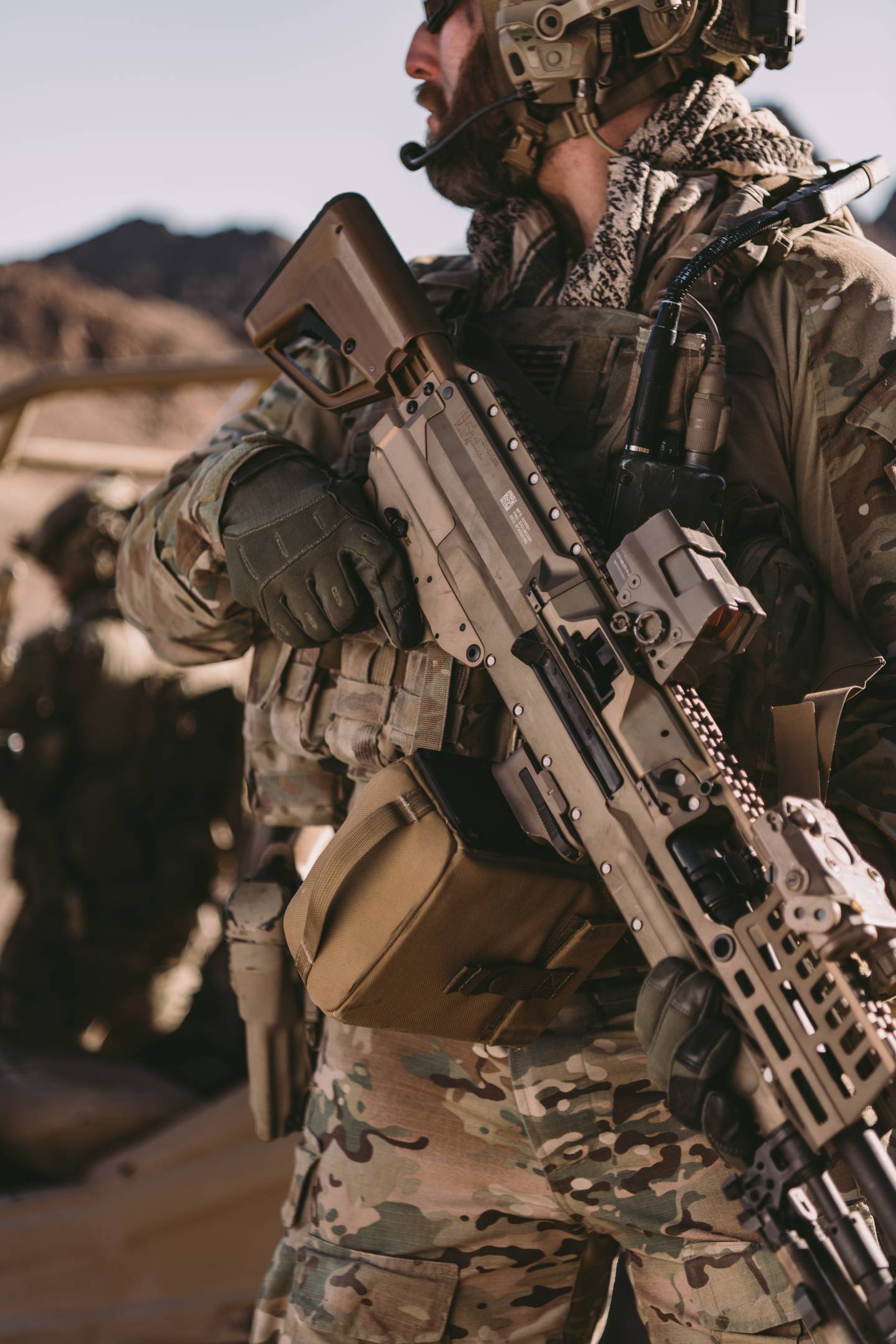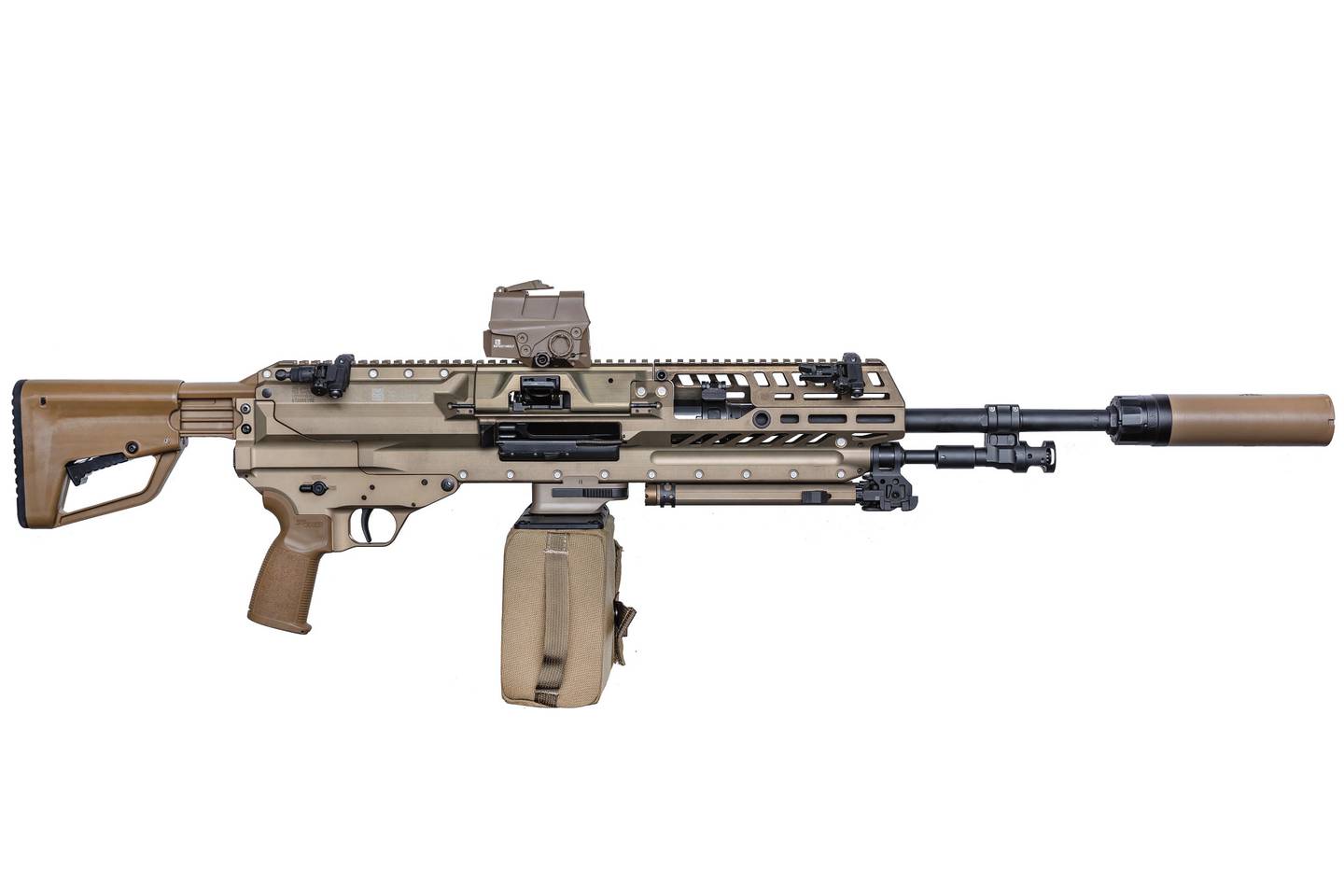PENTAGON, Arlington, Virginia – For the first time in 65 years, the Army has changed its individual rifle, squad machine gun, optic and caliber of both weapons at the same time.
The Army announced Tuesday that it selected Sig Sauer to manufacture and deliver a 6.8 mm Next Generation Squad Weapon to replace the M4 carbine and M249 Squad Automatic Weapon, which both fire the 5.56 mm round.
At a Wednesday media briefing, two Army brigadier generals and a colonel answered questions about the selection, the weapon, the ammunition and the fielding process.
The first batch of NGSW rifles and automatic rifles, along with their high-tech fire control optic, are scheduled to arrive to a not-yet-identified Army unit by the end of fiscal 2023, which means by or before October 2023.
The $4.7 billion rifle and automatic rifle weapons contract and the $2.7 billion contract for the advanced, computer-assisted fire control optic that works with both weapons, are the most substantial changes to individual- or squad-level small arms in generations.
The weapon is designed and aimed at close combat forces. That includes infantrymen but also cavalry scouts, combat engineers, forward observers and combat medics, said Brig. Gen. Larry Q. Burris, Jr. director of the Cross-Functional Team-Soldier Lethality and Infantry School Commandant

There are no current plans to issue the NGSW to non-close combat soldiers. Soldiers in fields other than those listed or not assigned to a direct combat unit will continue to use the M4 options and the M249 SAW, Burris said.
And if their commands choose, special operations forces and combat arms Marines will also be included in fielding plans, officials said.
The NGSW rifle is currently called the XM5. The NGSW automatic rifle is being called the XM250. The numbers for both weapons are sequential to those they are replacing. The XM5 will replace the M4 carbine and the XM250 will replace the M249.
Once the weapons have gone through a series of next steps, officials said, the Army will drop the “X” designator, said Col. Scott Madore, project manager for soldier lethality.
The Army chose the 6.8 mm round following the publication of the 2017 Small Arms Ammunition Configuration Study. The study was driven in part by advances in adversary body armor and field reports of underperformance and lackluster lethality for the 5.56 mm round at distances beyond 300 meters in Afghanistan gun battles.
In Army research, officials said, the 6.8 mm round outperforms the 5.56 mm on distance, accuracy and energy for lethal effects on target. That measure counts for lethal effects on either protected or unprotected targets.

When asked if the new round would penetrate advanced body armor currently fielded, Burris declined to comment specifically on ranges or penetration. He said only that the round has “a lot more energy” on target.
Initially, the 2017 report called for an intermediate caliber, something falling in the 6 mm range. That would make it larger than the standard-issue 5.56 mm but smaller and lighter than the medium machine gun M240′s 7.62 mm round.
While the 5.56 mm reaches its lethality limits at or before the 300 meter range, the 6.8 mm can effectively destroy targets at 600 meters and beyond, according to Army officials.
For civilian shooters, the 6.8 mm baseline measurements resemble a beefed-up version of a familiar cartridge from the hunting world, the .270 caliber rifle round.
That size difference matters, but in different ways. The XM5 rifle is two pounds heavier than the M4 when both are unloaded. But the XM250 is four pounds lighter than the M249 SAW.
The ammunition is heavier but officials did not provide specific pounds and ounces for a full combat load when compared with the 5.56 mm.

Over the next 10 years, the Army may order as many as 107,000 rifles and 13,000 automatic rifles, Burris said.
The contract has the capacity to build as many as 250,000 total rifles and automatic rifles, according to previously released budget documents. Burris said the additional numbers are for Marine Corps and special operations forces, should they adopt the weapons as their standard issue rifle and light machine guns.
More than 1,000 soldiers provided hands-on feedback over a 27-month weapon testing and selection process. More than 100 Marines and SOF troops also participated in evaluations and feedback, Madore said.
But the first quantities of weapons issued will be rather small, as the Army spins up production at two different sites, said Brig. Gen. William M. Boruff, who is with the Joint Program Executive Office-Armaments and Ammunition.
In the coming months, Sig Sauer will build 25 XM5 rifles and 15 XM250 automatic rifles and “a large quantity of ammo,” Madore said.

Those initial items will help the Army and Sig Sauer tweak the manufacturing process before upscaling the operations to produce thousands of rifles each year. The contract is technically for an indefinite number of rifles. Burris said that the annual rifle production numbers will be determined by Army priorities and budget considerations.
He could not provide an exact timeline of when all of the Army’s 120,000 close combat forces would receive the weapons systems.
Sig Sauer will receive millions of 6.8 mm projectiles, designed and manufactured by the U.S. government already, to begin the process of pairing the powder, primer and brass cartridge casing to build the 6.8 mm round, Boruff said.
As the Epping, New Hampshire-based company builds an ammo manufacturing line, the Army is funding work at Lake City Army Ammunition Plant near Independence, Missouri, the key producer of most small arms ammunition production.
The Lake City plant is adding an entire line and building, which are expected to be completed by fiscal 2025, solely for the manufacture of 6.8 mm ammunition.

The first major step in getting this rifle into the hands of soldiers will be producing the ammunition. Boruff said that the Army had limited interaction with the companies as they designed their weapons and cartridge solutions around the government-built 6.8 mm projectile.
But with the selection, the Army can now work closely as it speeds up the production of the round to build war and training stockpiles.
Burris said that the weapons’ timeline and delivery will coincide with growing the ammunition base for this new round.
When asked how the new round might affect NATO allies and partner training, Burris said some partners have shown interest in the NGSW and 6.8 mm program. However, the Army’s adoption of the round does not change the U.S. military commitment to continue to produce and use NATO standard 5.56 mm and 7.62 mm rounds for its existing weapons.
In January, the Army selected Vortex Optics and Sheltered Wings to provide the NGSW Fire Control optic, dubbed the M157, for $2.7 billion over the next decade.

Madore told reporters that the optic and weapons will be delivered to units together from day one.
The M157 is more than an optic, it has the following features:
- Variable magnification optic
- Backup etched reticle
- Laser rangefinder
- Ballistic calculator
- Atmospheric sensor suite
- Compass
- Visible and infrared aiming lasers
- Digital display overlay
Sig Sauer beat out Lone Star Future Weapons, which was partnered with General Dynamics-OTS, in the final selection phase of the competition. A third competitor, Textron Systems, did not meet technical qualifications earlier in the process.
Todd South has written about crime, courts, government and the military for multiple publications since 2004 and was named a 2014 Pulitzer finalist for a co-written project on witness intimidation. Todd is a Marine veteran of the Iraq War.





